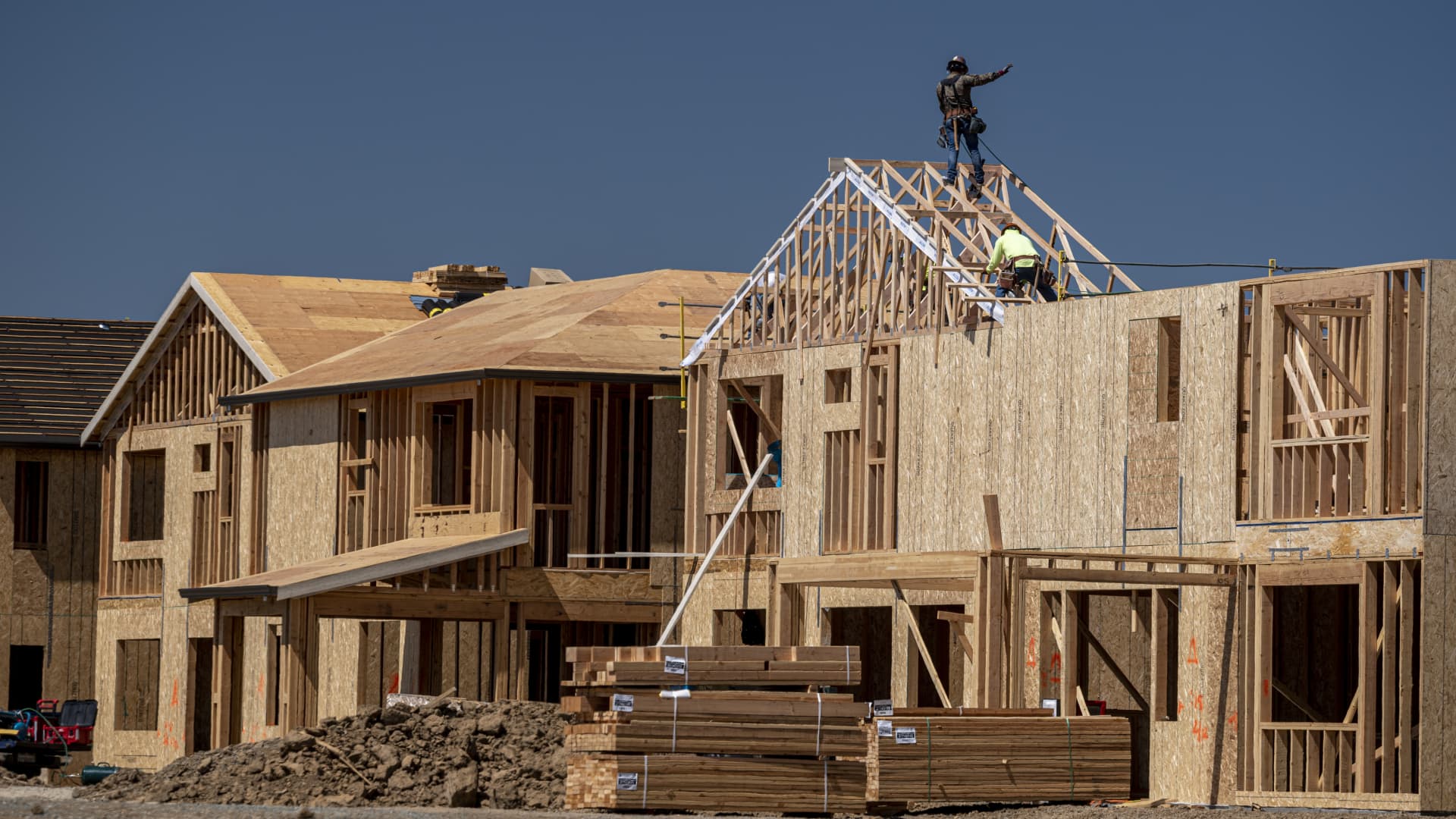There’s more trouble ahead for the housing market, according to Goldman Sachs. Total home sales – including new and existing – have fallen roughly 30% from their peak in October 2020, a larger decline than Goldman expected. The firm is predicting even more pain ahead driven by higher mortgage rates as the Federal Reserve hikes to tame inflation, limited housing supply, and the lingering impact of demand shifts from the pandemic. The bigger-than-expected decline is likely due to two things. First, the 2.5 percentage point increase in mortgage rates is larger than Goldman anticipated. Second, the average rate for the popular 30-year fixed mortgage rose as high as 5.8% in June , a full percentage point higher than the bank thought it would. “While we find that existing home sales are only one-third as sensitive to changes in rates in a supply-constrained environment, we still estimate that the higher path of mortgage rates this year will eventually weigh on the level of home sales by almost 4%,” analyst Ronnie Walker wrote in a Tuesday note. Shifts in demand, inventory There’s also been a shift in demand at this point in the pandemic that’s hit housing. While the early pandemic was a tailwind for housing, that has quickly faded, especially in areas that got the biggest boosts during the early part of Covid lockdowns. “The outlook for demand continues to benefit from a tight labor market and a continued demographic tailwind from millennials passing through their prime home-buying years,” wrote Walker. “However, the sustained reduction in affordability, waning pandemic tailwind, and recent decline in purchasing intentions suggest that home sales are likely to fall further through year-end: we now expect existing (4¼mn; -12% vs. July) and new home sales (½mn; flat) to total just under 4¾mn in Q4 (saar, vs. 5.3mn in July and 6.0mn in Q2) before rebounding modestly next year.” In July, sales of previously owned homes fell nearly 6% from the prior month to a seasonally adjusted annualized rate of 4.81 million units, according to the National Association of Realtors’ monthly report. New home sales fell 12.6% during the same period, according to a report from the U.S. Department of Housing and Urban Development and the U.S. Census Bureau. Short supply remains an issue that will continue to weigh on the sector. While there has been a big uptick in new homes for sale – up 50% over the last 18 months – much of this boost is from a backlog of incomplete homes, according to the note. New, completed homes for sale remain near record lows. “The outlook continues to offer no quick fixes for the housing shortage, and the roughly 10% reduction in building permits from the peak, 20% reduction in housing starts, and delayed completion times for new homes are likely to keep supply constrained through at least the end of next year,” Walker said. Recession hitting different this time In the past, housing downturns usually coincided with recessions that brought higher unemployment and led to an influx in housing supply. This time around, however, the labor market is strong and looks likely to stay healthy despite a mild downturn, meaning housing supply is also likely to stay constrained. That means more pain is ahead this year for potential homebuyers. “Our model suggests that home price growth will slow sharply in the next couple quarters (+8½% QoQ ar in Q3, +3% QoQ ar in Q4, corresponding to +14% Q4/Q4 in 2022), as the imbalance between supply and demand continues to shrink, mostly through lower demand,” Walker wrote. “Thereafter, we expect home prices to be flat in 2023.”

